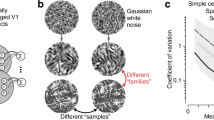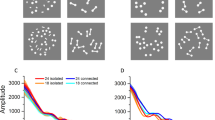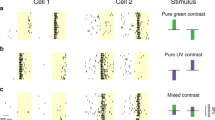Abstract
ACCORDING to Helmholtz's theory of colour vision, luminosity is caused by the summed excitations of the three kinds of receptors. Granit1, however, suggests that the luminosity is caused by a special type of receptor, the dominators, whereas the other (two) types (the modulators) only give the colour to the observed objects.
This is a preview of subscription content, access via your institution
Access options
Subscribe to this journal
Receive 51 print issues and online access
$199.00 per year
only $3.90 per issue
Buy this article
- Purchase on Springer Link
- Instant access to full article PDF
Prices may be subject to local taxes which are calculated during checkout
Similar content being viewed by others
References
Granit, R., Nature, 151, 11 (1943).
Judd, D. B., Research papers, Nat. Bur. Stand., 33, 407 (1944).
de Vries, Hl., J. Opt. Soc. Amer., 36 (Feb. 1946).
Author information
Authors and Affiliations
Rights and permissions
About this article
Cite this article
DE VRIES, H. Luminosity Curve of Trichromats. Nature 157, 736–737 (1946). https://doi.org/10.1038/157736b0
Issue Date:
DOI: https://doi.org/10.1038/157736b0
This article is cited by
-
Simulated bipolar cells in fovea of human retina
Biological Cybernetics (1991)
-
The heredity of the relative numbers of red and green receptors in the human eye
Genetica (1949)
-
Mechanism of Colour Discrimination and a New Type of Colour Blindness
Nature (1946)
Comments
By submitting a comment you agree to abide by our Terms and Community Guidelines. If you find something abusive or that does not comply with our terms or guidelines please flag it as inappropriate.



